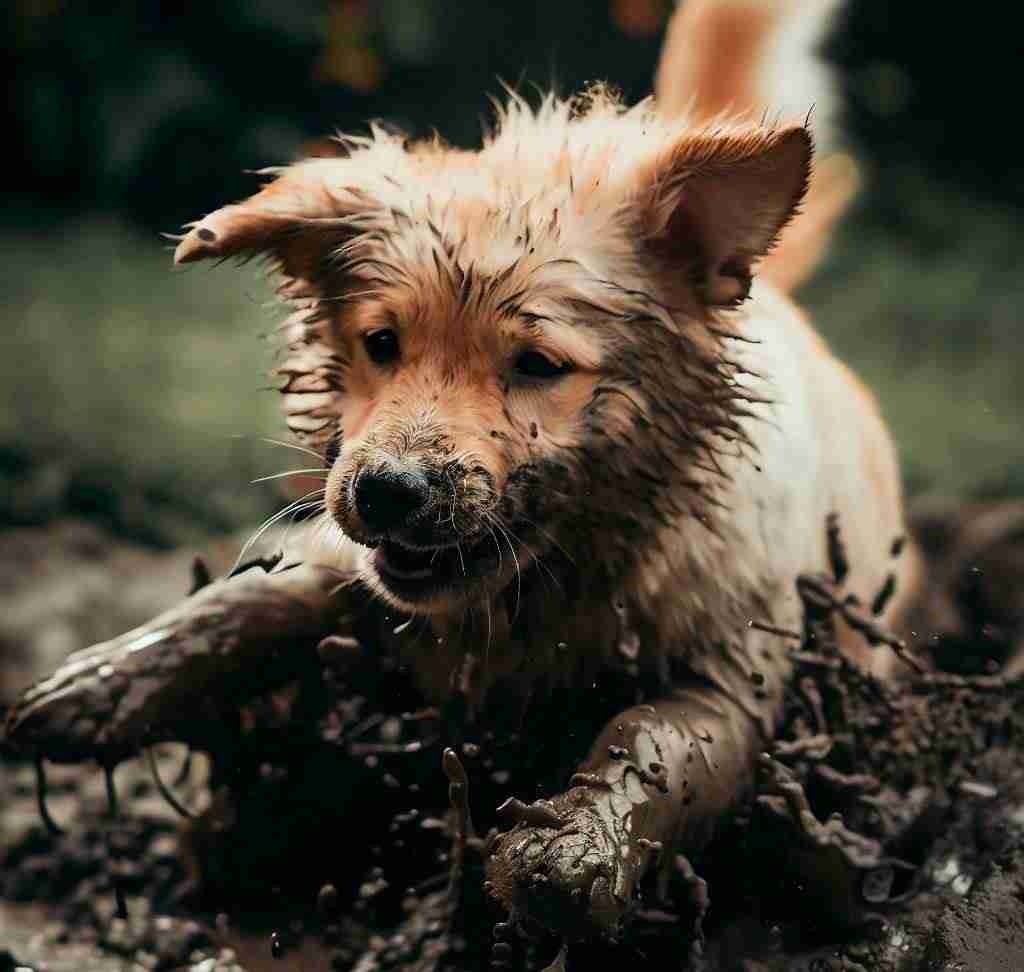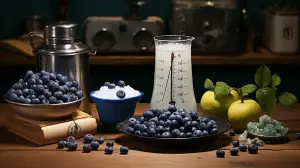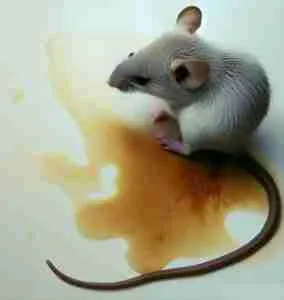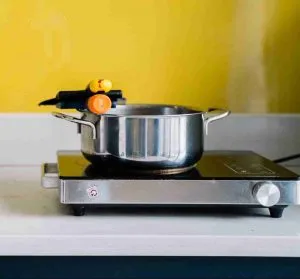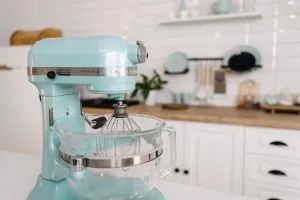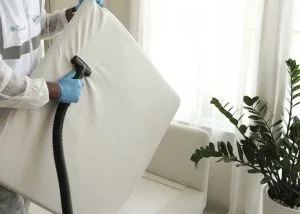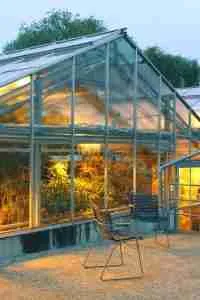Contents
ToggleKey Takeaway:
- Artificial grass is a practical solution to cover mud in your yard for dogs. It provides a clean and comfortable surface for your furry friends to play on, and it eliminates the hassle of constantly cleaning muddy paws.
- Lawn gravel and/or pavers can also be used as a ground cover to prevent mud in your yard. These materials allow for excellent drainage and provide a durable surface that is easy to maintain.
- Pine flakes and cedar hog fuel are natural ground cover options that can help reduce mud in your yard. These materials provide a decorative and organic solution while also preventing excessive mud accumulation.
Introduction
Mud in the yard can create an unpleasant environment for dogs, leading to mess and discomfort for both pets and their owners. For those facing this common challenge, this article offers practical and efficient solutions to cover and manage mud in the yard, keeping it a clean and enjoyable space for dogs.
Understanding why mud forms in the yard is the first step in resolving the issue. Common causes like inadequate drainage or areas with heavy foot and paw traffic can lead to the accumulation of mud. Thankfully, this can be managed by installing proper drainage systems, selecting appropriate landscaping materials, and creating well-placed paths to divert traffic.
Beyond prevention, alternative ground coverings such as pea gravel, wood chips, or artificial turf are fantastic options for creating a mud-free playing surface for your dogs. These alternatives are not only durable but also provide excellent drainage and are easy to maintain. Plus, they reduce the likelihood of dirt being tracked into the house.
Lastly, but certainly not least, a well-maintained yard is essential to keep mud at bay. Regular yard care including mowing, aerating, fertilizing, and the removal of leaves and other debris, promotes healthy grass growth and minimizes mud buildup.
Together, these strategies can transform a muddy yard into a delightful outdoor space for dogs to explore, play, and roam freely. Follow along as we delve into these solutions in detail and help you choose the best methods for creating a mud-free yard tailored to your furry friends’ needs.
The Problem: Mud in Your Yard and Dogs
If you have dogs, mud accumulation in your yard isn’t just a nuisance; it’s a multifaceted problem that can have several negative consequences:
- Hygiene Concerns: Mud can become a breeding ground for bacteria and germs, putting both your pets and family members at potential risk for health issues.
- Cleaning Challenges: Dogs tracking mud into the house creates ongoing cleaning problems, resulting in additional time and effort spent on maintenance.
- Discomfort for Dogs: Navigating through muddy areas can be unpleasant for your dogs’ paws, leading to possible injury or stress that may manifest in behavioral problems.
- Landscaping Damage: Consistent mud accumulation can mar the visual appeal of your yard, harm your plants, and even reduce the overall value of your property.
- Unpleasant Odors: The damp, musty smell of wet mud can detract from the enjoyment of your outdoor space for both humans and pets.
Addressing these challenges calls for a proactive approach. By finding and implementing effective solutions to control mud, you’re not only improving your living environment but also enhancing the well-being of your furry friends.
Take, for example, a dog owner with a Labrador Retriever named Sophie. Faced with the daily mess of muddy paw prints throughout the house, they sought innovative ways to combat the problem. Through strategic planning and thoughtful design, they created a yard where Sophie could play freely without the mud issue, resulting in a cleaner, more enjoyable space for everyone.
The key is to identify what works best for your specific situation and to recognize that managing mud in the yard is not merely an aesthetic concern but a matter of health and comfort for your dogs. The following sections will provide comprehensive solutions to help you conquer the mud problem and create a more dog-friendly yard.
Understanding the Impact of a Muddy Yard

Excessive mud in your yard isn’t merely an eyesore; it can have real consequences for your dogs’ health and happiness. Here’s what you need to know about the impact of a muddy yard and how to tackle the issue:
- Health Risks for Dogs: Constant exposure to mud can irritate your dogs’ paw pads and even lead to skin infections. Slippery conditions increase the risk of slips and falls, which could result in painful injuries or strains.
- Understanding Breed-Specific Needs: Different dog breeds may react to muddy conditions in various ways. Long-haired breeds might be more prone to mud accumulation in their fur, leading to matting or skin problems, while smaller breeds or those with shorter legs may find it more challenging to move through the mud.
- Effective Drainage Solutions: Persistent muddy conditions are often the result of poor drainage. Installing systems like French drains or using strategically placed gutters can help divert water away from problem areas, greatly reducing mud accumulation.
- Using the Right Ground Covers: Incorporating suitable ground covers such as gravel, mulch, or even artificial turf can further minimize mud. These materials provide a stable surface for dogs to play on without becoming muddy.
- Considering the Costs: Beyond the immediate physical concerns, untreated mud problems can lead to expensive veterinary bills if your dogs sustain injuries or infections. The investment in proper mud management can save money in the long run.
Solutions for Fixing Drainage Problems
Addressing mud problems in your yard is essential for the comfort and well-being of your dogs. Here are 6 solutions that can help cover mud and create a dog-friendly yard:
- Identify Problem Areas: Examine your yard and pinpoint spots where water accumulates, leading to mud. Understanding the problem areas will guide your efforts in creating effective solutions.
- Proper Grading and Leveling: Adjust the ground’s elevation to encourage water runoff and minimize pooling. By filling in low spots and creating gentle slopes, you can direct water away from these problem areas, preventing mud formation. Learn more about why your lawn might sink when walking on it here.
- Installing Pet-Friendly Drainage Systems: Consider implementing drainage solutions that are compatible with your dogs’ activities. French drains or dry wells can be excellent options to channel water away from the yard, mitigating mud problems.
- Utilize Rain Gardens with Dog-Safe Plants: Building rain gardens with native, non-toxic plants can absorb and filter rainwater, further enhancing drainage. This approach not only helps with mud but also creates an attractive landscape.
- Maintain Gutters and Downspouts: Regular cleaning of gutters and downspouts ensures that water flows away from your yard efficiently. Overflowing gutters can exacerbate mud problems, so consistent maintenance is key.
- Choose Dog-Friendly Ground Covers: Consider using materials like gravel, wood chips, or artificial turf in problem areas. These ground covers provide a stable surface for your dogs to play on without becoming muddy.
Fact: Rain gardens are environmentally friendly solutions that not only improve drainage but also provide habitat for diverse plant species and contribute to reducing water pollution. (Source: Environmental Protection Agency)
Using Artificial Grass

Artificial grass is becoming an increasingly popular solution for dog owners who want to cover mud in their yard. Not only does it provide a visually appealing alternative to natural grass, but it also offers several practical benefits that can enhance the outdoor experience for both you and your dogs:
- Durability for Dogs: Artificial grass creates a robust and long-lasting surface that can handle the rough and tumble of canine play. Unlike natural grass, which can quickly turn into a muddy mess with heavy use, artificial grass maintains its integrity, keeping your yard mud-free.
- Low-Maintenance Solution: The beauty of artificial grass lies in its minimal upkeep requirements. Forget about the endless cycle of mowing, watering, and fertilizing. With synthetic turf, you have more time to play with your furry friends and less time worrying about yard work.
- Hygienic and Easy to Clean: One of the challenges with natural grass is the difficulty in cleaning up after your dogs. Artificial grass simplifies this task, with solid waste being easy to remove and liquids draining effortlessly through its permeable backing. A quick hose down can keep the area looking and smelling fresh, providing a clean environment for your dogs to enjoy. Learn how to keep dogs from pooping in your yard here.
- Year-Round Enjoyment: Mud can restrict your dogs’ outdoor activities during certain weather conditions. Artificial grass solves this problem, but if you prefer natural grass, here’s how to stop dog urine from killing it naturally. Whether it’s raining or shining, your dogs can have fun outside without the risk of creating a muddy mess.
- Eco-Friendly Option: Artificial grass eliminates the need for chemicals and pesticides commonly used in natural grass maintenance. This benefits the environment and ensures that your dogs are playing on a non-toxic surface.
- Comfortable Play Area: Quality artificial grass can be soft and cushioned, providing a comfortable space for your dogs to run, play, and relax. It’s a space they can enjoy without the discomfort of muddy spots or uneven terrain.
A true fact: According to a study by the Environmental Protection Agency (EPA), artificial grass can save up to 55 gallons of water per square foot each year compared to natural grass.
Lawn Gravel and/or Pavers

If you are battling mud in your yard and looking for a way to create a clean and accessible outdoor space for your dogs, consider the use of lawn gravel and/or pavers. These landscaping options are not just visually appealing but offer practical benefits to cater to the specific needs of dog owners. Here’s how:
- Durability for Active Dogs: Dogs love to run, jump, and explore, and this can take a toll on a yard’s surface. Lawn gravel and pavers are designed to withstand the heavy foot traffic that comes with energetic dogs. Unlike other materials that may wear down or become muddy, these stone solutions stay firm and provide a stable surface for your pets to enjoy.
- Proper Drainage to Prevent Mud: One of the main culprits behind a muddy yard is poor drainage. Lawn gravel and pavers address this issue by allowing water to flow through and away from the surface. The gravel’s porous nature and the pavers’ strategic spacing create a natural drainage system that keeps the yard dry and mud-free.
- Low-Maintenance Option: If you’re tired of the constant mowing, watering, and other upkeep that comes with natural grass, lawn gravel and pavers might be the answer. They require minimal maintenance, freeing up more of your time to play with your furry friends. A simple rake or occasional wash is usually enough to keep them in good condition.
- Aesthetic Appeal: Beyond functionality, lawn gravel and pavers add a touch of sophistication to your yard. With various textures, colors, and designs available, they allow you to create a space that’s practical for your dogs and complements your home’s overall landscape.
- Versatility in Landscaping: It’s no surprise that landscape designers often turn to lawn gravel and pavers for various projects. Their versatility enables them to be used in different yard layouts and designs, providing a tailored solution to cover the mud and enhance the appearance of your outdoor space.
Pine Flakes as a Ground Cover
If you’re tired of your dogs tracking mud into your home and looking for a natural, affordable solution, pine flakes might be the answer. Serving as an effective ground cover, pine flakes offer unique benefits to transform your yard into a cleaner and more pleasant space for your furry friends.
Here’s why pine flakes are gaining popularity among dog owners:
- Mud Prevention: Mud accumulation in your yard can quickly become a messy problem, especially during rainy seasons. By spreading a layer of pine flakes over the problem areas, you create a barrier that prevents mud from forming, ensuring a cleaner play area for your dogs.
- Natural Odor Control: Let’s face it, odors from dog waste can make spending time in your yard less enjoyable. Pine flakes offer a natural solution to this problem. Their pleasant pine aroma acts as a natural deodorizer, neutralizing unpleasant smells and keeping your outdoor space fresh.
- Comfortable Surface for Dogs: Dogs love to explore, play, and sometimes just lie down and relax in the yard. Pine flakes provide a soft and cushioned surface that’s gentle on their paws, making it a comfortable environment for them to enjoy.
- Environmentally Friendly Option: Pine flakes are a biodegradable option that can be easily replenished as needed. Their natural antifungal properties further contribute to a clean and healthy yard, making them an eco-friendly choice.
A Success Story: Consider the experience of Emily, a dog owner who was struggling with a constant muddy mess in her yard caused by her energetic dog, Max. After trying pine flakes, she was thrilled with the results. Not only did the flakes effectively prevent mud accumulation, but they also offered a soft surface that Max loved, and the natural scent control of the pine kept her yard smelling great. Her story highlights how pine flakes can be a practical and satisfying solution for many dog owners.
Pine flakes can be a game-changer if mud is ruining your enjoyment of your yard. This natural ground cover provides a multipurpose solution, addressing mud control, odor neutralization, and comfort for your dogs. Its environmentally friendly nature adds to its appeal, making it a smart choice for conscientious pet owners. By embracing pine flakes, you can create an inviting outdoor space that both you and your dogs will appreciate.
Cedar Hog Fuel as Ground Cover
Cedar hog fuel may not be a household name, but for dog owners grappling with muddy yards, it could be the perfect solution. This specialized ground cover offers multifaceted benefits that address not only mud control but also pest resistance and aesthetics.
Let’s take a closer look at what makes cedar hog fuel a compelling choice for your yard:
- Mud Prevention: The primary concern for many dog owners is keeping mud out of the house. Cedar hog fuel provides a protective barrier over the soil, stopping mud from sticking to your dog’s paws and making its way into your home. It creates a stable surface that dogs can run and play on, without the mess.
- Longevity and Durability: Cedar hog fuel’s natural properties make it resistant to decomposition. This means it can withstand weather conditions and heavy use from dogs without breaking down quickly, making it a long-lasting solution for your yard.
- Aesthetically Pleasing: If you care about the appearance of your yard, cedar hog fuel offers a visually appealing option. It creates a neat and uniform look that can enhance the overall aesthetics of your outdoor space.
- Eco-Friendly Choice: For those mindful of environmental sustainability, cedar hog fuel is derived from renewable sources, making it an environmentally responsible option. It’s a way to care for your yard and your planet simultaneously.
- Natural Insect Repellent: An added benefit of cedar hog fuel is its strong cedar aroma, which serves as a natural insect repellent. This unique property can keep pesky bugs at bay, adding to the comfort and enjoyment of your yard for both you and your pets.
Cedar hog fuel offers a comprehensive and environmentally friendly solution to cover mud in your yard. Its unique combination of benefits addresses multiple concerns for dog owners, from cleanliness to pest control to aesthetics. If you’re looking for an innovative way to enhance your outdoor space and make it more dog-friendly, cedar hog fuel could be an option worth exploring.
Conclusion
In conclusion, tackling the mud in your yard for the benefit of your furry friends isn’t an insurmountable challenge. It can be achieved through a blend of creative solutions and ongoing care. By investing in proper drainage, exploring alternative ground coverings like artificial grass, gravel, cedar hog fuel, or pine flakes, and maintaining regular upkeep, you can forge a space that’s not only clean and mud-free but also appealing and comfortable for your pets.
The end goal is not just a mud-free yard but a welcoming environment where your dogs can roam, play, and enjoy without causing a mess. These solutions not only make your life easier as a pet owner but also contribute to the overall well-being and happiness of your dogs. Your investment in a cleaner yard is an investment in a happier, healthier home for both you and your four-legged family members.
Five Facts About Covering Mud in Yard for Dogs:
- ✅ Mud in the yard can be fixed by improving drainage through methods like installing French drains or fixing faulty drainage systems. (Source: Team Research)
- ✅ Artificial grass can be a solution for covering mud, as it conserves water, doesn’t attract bugs, and never needs fertilizer. (Source: Team Research)
- ✅ Lawn gravel and/or pavers can be used to cover muddy areas and create a beautiful yard that is less muddy. (Source: Team Research)
- ✅ Pine flakes are an eco-friendly option to cover up mud temporarily and help dry out the yard. (Source: Team Research)
- ✅ Cedar hog fuel, made from 100% cedar, can be used as ground cover for mud control in yards. (Source: Team Research)
FAQs
How can I clean up muddy paw prints in my yard?
To clean up muddy paw prints in your yard, you can consider several options:
- Fix drainage problems by elevating the yard or installing French drains, rain gutters, or rain barrels.
- Use artificial grass, which is non-toxic, hypo-allergenic, and doesn’t attract bugs.
- Consider using gravel or pavers to cover muddy areas.
- Apply pine flakes to temporarily cover up muddy spots and absorb moisture.
- Use cedar hog fuel (Gorilla Hair) as a fibrous bark ground cover for mud control.
How can I prevent moisture from causing mud in my yard?
To prevent excess moisture from causing mud in your yard, you can take the following measures:
- Fix any faulty drainage systems to ensure proper water flow.
- Elevate your yard to improve drainage and prevent water accumulation.
- Install rain gutters or rain barrels to collect and recycle water away from your yard.
- Hire a professional to assess and address any drainage issues.
What are the advantages of using artificial grass in a muddy yard?
Artificial grass offers several advantages in a muddy yard:
- It conserves water as it doesn’t require regular watering like natural grass.
- It is non-toxic and hypo-allergenic, making it safe for dogs and people with grass allergies.
- It eliminates the need for fertilizer and herbicides, reducing maintenance requirements.
- Artificial grass doesn’t attract bugs, providing a cleaner environment.
- You never have to mow artificial grass, saving time and effort.
How do I handle urine and poop on artificial grass?
To handle urine and poop on artificial grass:
Urine can soak through the porous backing of artificial grass, so it’s important to rinse the area with water to prevent odor and bacteria buildup. Poop should be promptly removed and any residues should be rinsed away to maintain cleanliness and hygiene.
Can I create a desert landscape in my yard to cover up mud?
Yes, you can create a desert landscape in your yard to cover up mud. One option is to use lawn or pea gravel, which can effectively cover muddy areas without washing away. Another option is to incorporate crushed rock and gravel with paving stones to create an aesthetically pleasing yard that is less prone to mud.
What is cedar hog fuel and can it be used to control mud?
Cedar hog fuel, also known as Gorilla Hair, is a fibrous bark made from 100% cedar. It is commonly used for mud control in various settings, including pathways, animal kennels, and playgrounds. However, it’s important to use untreated cedar hog fuel to avoid using products that may be toxic to animals and people. Some cedar hog fuel products are made from chemically treated wood or recycled pallet boards, which should be avoided.
Additional Reading
Here are some additional readings that can provide insights into various aspects of garden and lawn care, and might contribute to solving the muddy yard problem:
- How to Get Rid of Pigeons on Balcony: Learn how to keep unwanted birds like pigeons away from your outdoor spaces, a skill that can contribute to maintaining a clean and inviting environment for your pets.
- How Often to Water New Grass Seed: Understanding how to water new grass seed properly can help you achieve a lush and mud-free lawn, providing an enjoyable outdoor space for your dogs.
- Aerate and Overseed Lawn: Aerating and overseeding are vital processes to maintain a healthy and robust lawn. Learn the best practices to keep your lawn from becoming muddy and unmanageable.
- How to Drain a Pool with a Garden Hose: If you have a pool in your yard, learning how to drain it properly with a garden hose can prevent muddy areas around the pool, enhancing the overall environment for your dogs.
- How to Clear a Vegetable Garden Full of Weeds: If your yard also contains a vegetable garden, keeping it free of weeds can prevent muddy patches and create a more enjoyable space for both you and your pets.

